
How would you like to live in 204 square feet of space, in your own 8.5’X24’ tiny house? Maybe in a tiny house community, where you are among 40 or so other tiny homes? Where would you like this home to be? Maybe walking distance to a beautiful beach on the Oregon Coast? Meet Brenda Schwerin, who lives this lifestyle in her tiny home she calls “Just B Tiny 2.0”.
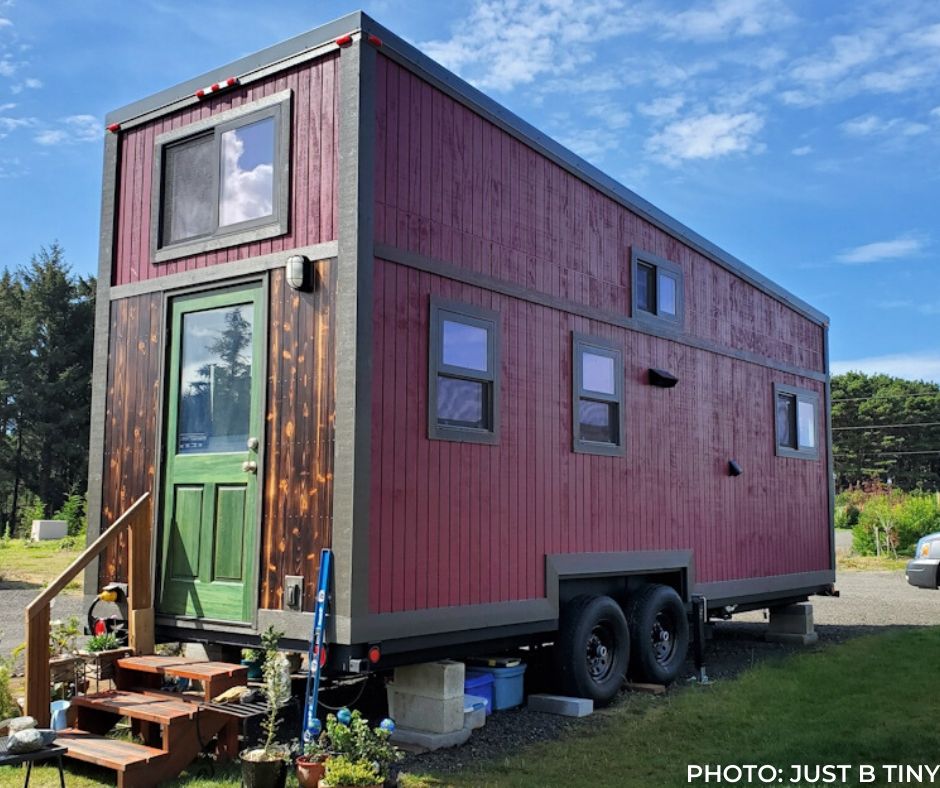
The reason she calls her tiny house 2.0 is because it is her second tiny home. The first one, which was even tinier at 20’ long, was in an accident during its third trip. It was made in Oregon, and then transported to Las Vegas, Nevada. Brenda had lived in Northern California, in her past, in a 4,100-square foot house. She later had her house moved to Nevada where she stayed to help her aging mom. She then moved her original tiny house to a Northern Californian RV park. It was during that last leg from California (where she had been surrounded by fires!) to Oregon that her tiny house had a major accident on the highway!
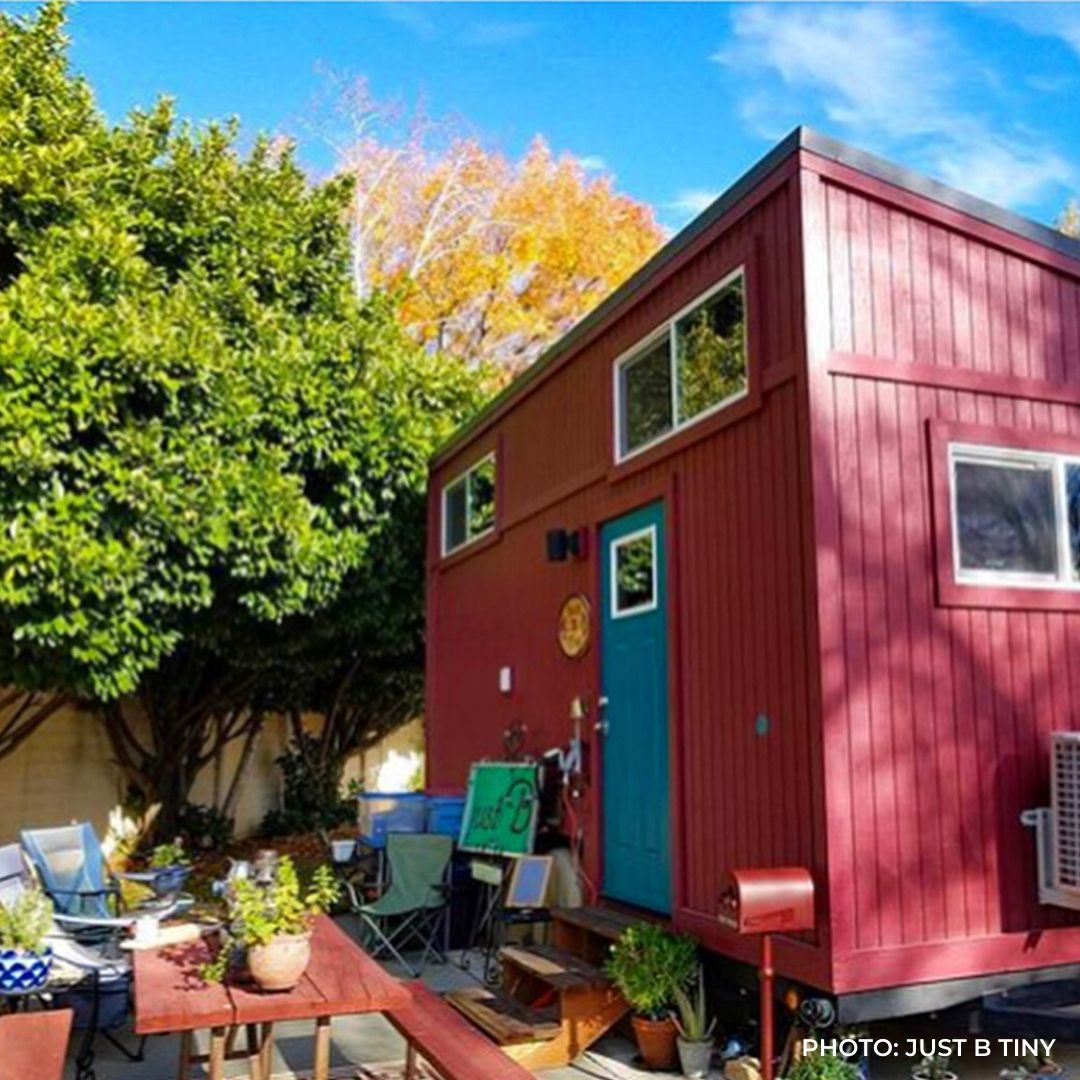
Brenda’s tip: “When you get insurance for your tiny home on wheels, make sure to inventory the value of the interior contents so you can replace everything!”
Brenda also recommends double checking (or have your lawyer read over) your policy to ensure that you are covered for 1. the dwelling 2. the trailer 3. the trip and 4. all your contents.
Tiny House, Giant Journey
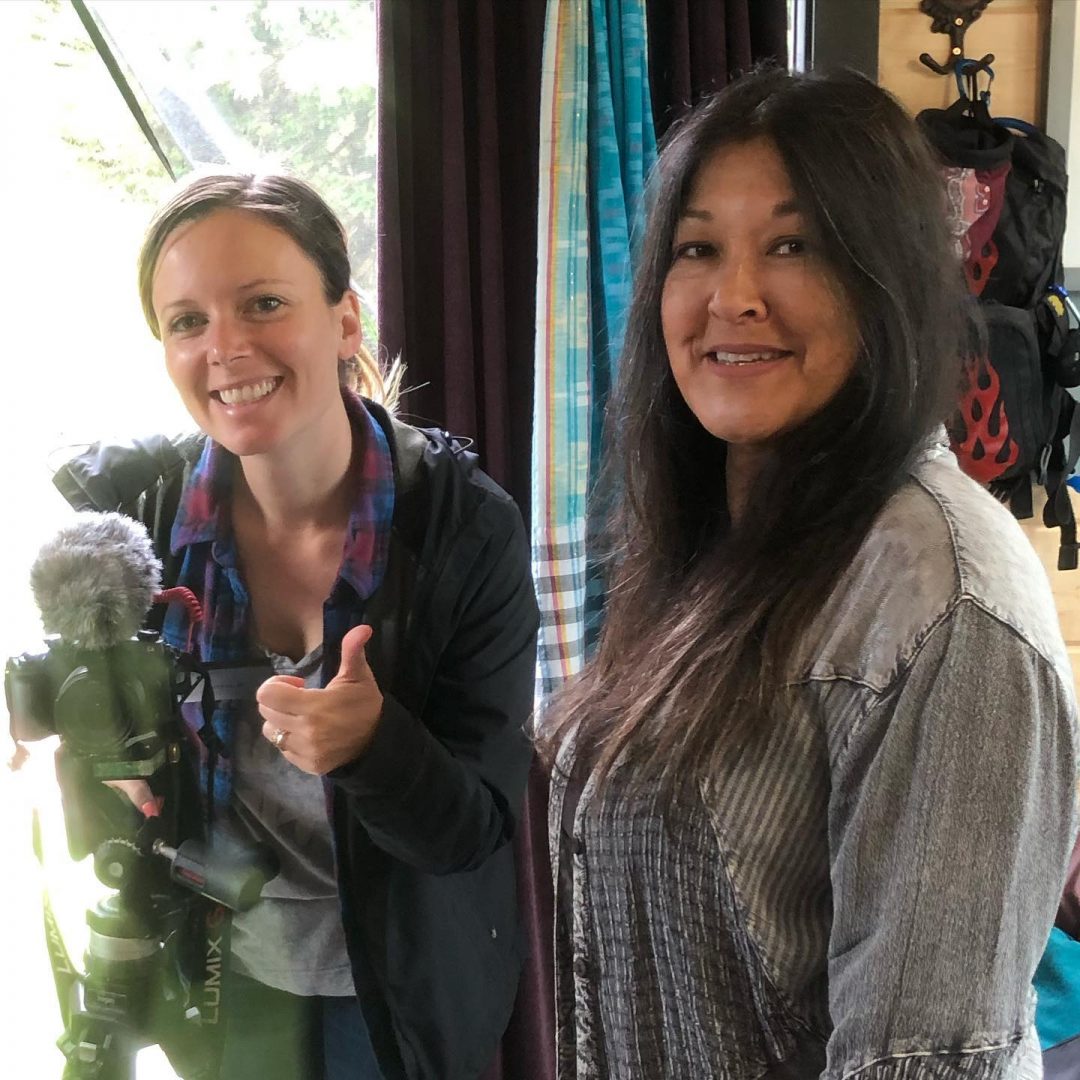
Jenna – the YouTube creator and star of “Tiny House, Giant Journey” reached out to Brenda to coordinate interviewing her and creating a video tour of her home. Understandably, the interview was pushed off during the “stay home” orders related to the onset of the COVID-19 pandemic. As the states slowly eased up restrictions, Jenna coordinated her trip. Brenda, a favorite client, invited Tiny SMART House to come and be behind the scenes during the interview.

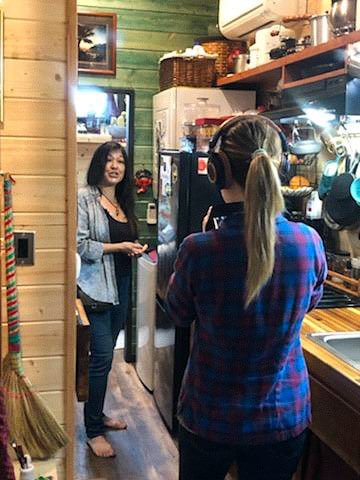
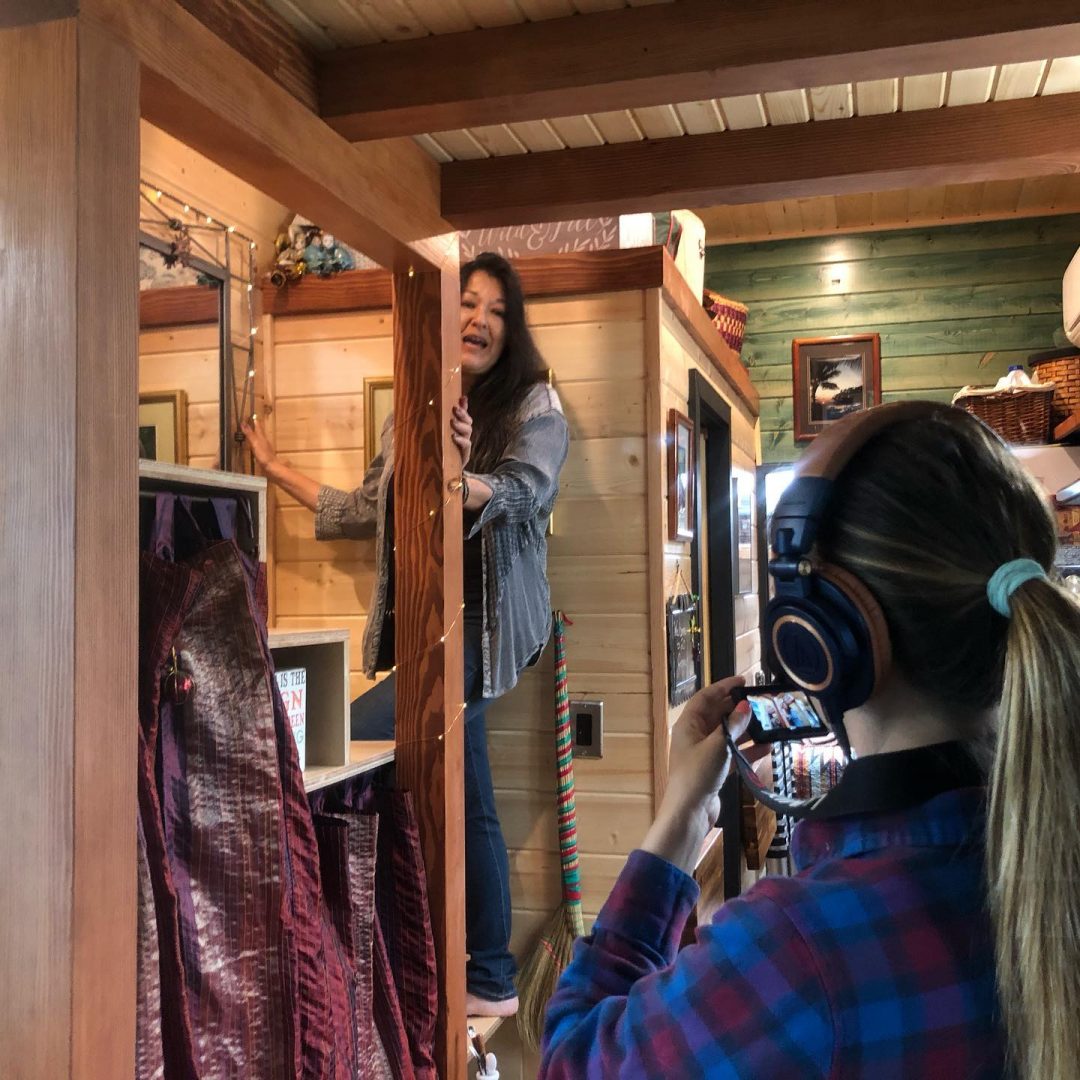
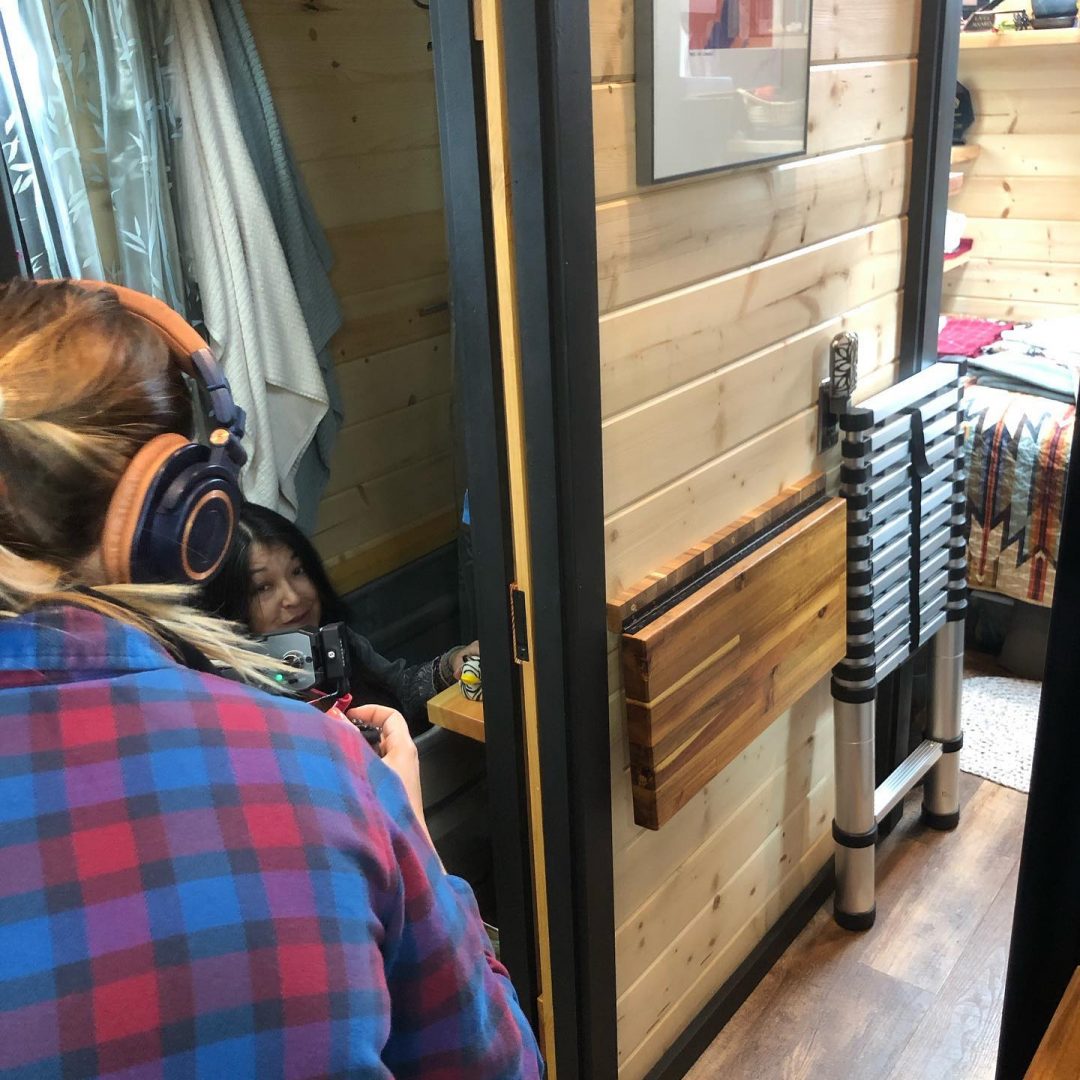
Brenda has quite a dramatic story about how she came to live in her current home, which she calls “Just B Tiny 2.0”. You can learn more about Brenda’s story in Jenna’s video, which she titled “Her 1st Tiny House Crashed💥💔!! So She Made a Better One
Made for Comfort
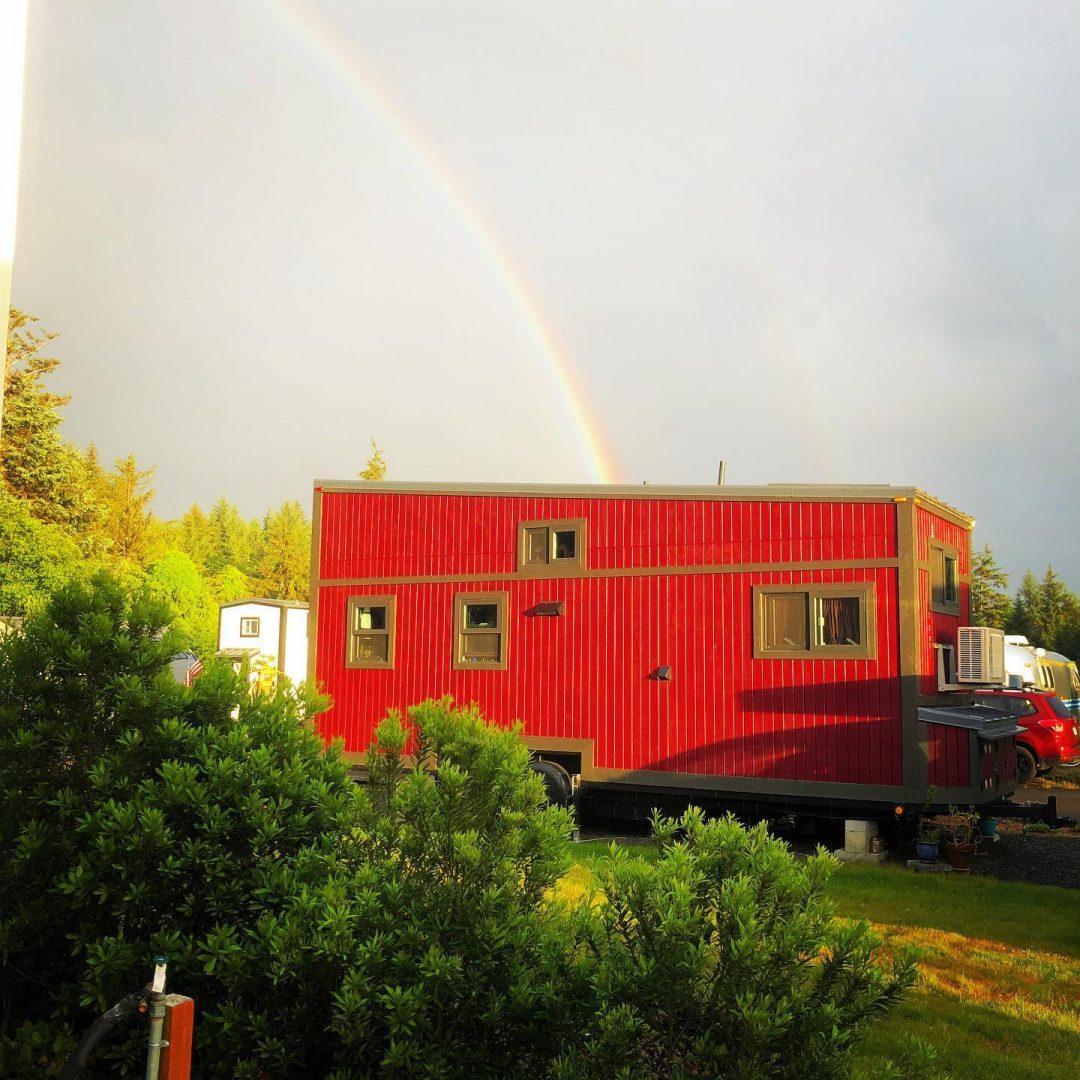
Can you tell from the video how comfortable Brenda has made her space? Brenda says the journey of downsizing is ongoing. After all, she started with a lifetime of things from her 4,100-square foot house down to a 204-square feet home. She made sure to have space to show her mementos from her life, room for her cat, lots of storage, an office and extra counter space for when she cooks – and she loves to cook! To aid her disabilities, she wanted a first-floor day bed, swing arm desktop, open cabinetry, easy climbing stairs and especially a soaking tub. She got them all. Along with the design team at Tiny SMART House, they come up with the solution of using a horse trough for her to soak in! Her tiny home truly has everything she needs.
Tiny Living Advocate
Brenda is happy living in her tiny home. At the RV park for tiny homes and vintage campers, (Tiny Tranquility) she meets interesting people, often profiling them in her lifestyle blog. She is a tiny house advocate, involved as an active member in several tiny house associations, as well as giving advice to others going tiny. If you’d like to learn more about Brenda, and the tiny house lifestyle (#justbtinylife) follow her on Instagram @justbtinyhouse or check out her blog https://justbtiny.com/justbjourney/
Guest blog and photos (except where noted by JUST B TINY) by Stacey Newman Weldon. When she isn’t busy helping people create their own tiny custom homes, you can find her inspiring others to discovering their sense of fun at Adventure Wednesdays. Continue reading “Just B Tiny 2.0: Brenda’s story”